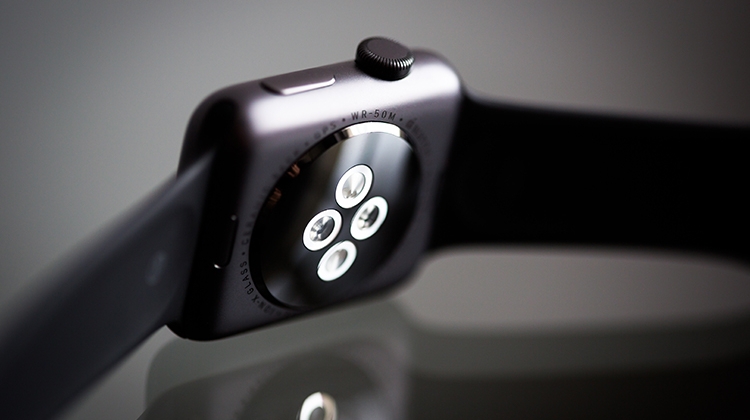In a highly regulated environment, attributability is a core principle that must be constantly respected. It is so important that it is included in the ALCOA+ framework, which identifies key characteristics for data: attributability, legibility, contemporaneousness, originality, accuracy, availability, endurance, consistency, and completeness. Data integrity demands that GxP-relevant data have all these characteristics. Wearable and biometric technologies can help ensure attributability in an efficient and compliant way, while also improving other aspects of production.
Conventional Methods to Authenticate Operator Identity
To ensure that a specific operation is uniquely linked to an individual, the individual must authenticate their identity when performing a GxP-relevant activity. For example, operators in production are asked to authenticate their identity dozens of times throughout a single shift. In some cases, an old-fashioned pen-and-paper signature is required; however, a specific user typically provides an e-signature by entering their username and password. While this operation is simple in normal life, it becomes cumbersome in a production setting where the worker is wearing gloves and other protective gear and typing on a special washable keyboard.
Wearable and Biometric Alternatives
In recent years, companies have started looking closely at alternative ways to effectively facilitate the authentication process without compromising data integrity. Initial solutions allowing users to scan their badge and enter a code in the system were explored and sometimes implemented. However, this approach did not solve the problem for operators working in controlled environments. When ID cards are used, there is no safe way to ensure that they are used properly.
In contrast, wearables, an Industry 4.0–enabling technology, have provided an effective solution that eliminates the need for e-signatures and helps operators work better and faster. Devices such as smart watches, bracelets, and wristbands with contactless connectivity can authenticate users with a simple swipe. Such devices are equipped with a sensor that can detect when the watch or band is being worn.
Authentication using a wearable device can take place in different ways. Generally, users are asked to authenticate themselves at the beginning of each shift. Logging in can be performed in a traditional way by inputting a username and password at an enrollment station, which pairs the operator with a specific device (if one is not issued personally to each employee). Alternatively, in solutions such as the one in the solution proposed by Nymi, the operator can log in by pressing their index finger on the wristband. After authentication, e-signatures can be made in a fully compliant way through the swipe of an arm close to a specific reader. If the operator removes the device, it automatically detects that it is no longer being worn and logs off the user. The user cannot perform any other signatures until the band or watch is worn correctly and the user has logged in again.
Another way of authenticating users is through biometric data, such as fingerprints. Whenever the user must provide an e-signature, they touch the wearable device with their index finger. The device reads the operator’s fingerprint and automatically signs with their credentials.
Saving Time and Improving Safety
Entering a signature on a keyboard could take 10 to 15 seconds, whereas signing via a simple gesture takes just a couple of seconds. This means a significant saving of up to 20 minutes for every 100 signatures, which is especially relevant for operators working in production phases that are classified as “e-signature intensive” (e.g., weighing and dispensing). For an operator who is called to sign off 50 times per shift, use of wearables could lead to a potential total saving of 40 hours per year (assuming one shift per day for 220 days per year). That is a significant amount of time, which could be used to carry out more relevant tasks or reduce operator workload.
In addition to authentication, smart watches can also be used for other purposes. For example, they can notify a specific operator or shift supervisor about a problem that requires attention, or dispatch a ticket to a team of maintenance operators. Once the maintenance operator receives the ticket notification, they can take charge of the issue simply by swiping on the display. The use of such devices could also improve the company’s health and safety profile by detecting “man down” situations and quickly and effectively notifying operators working in an area where a safety issue has occurred.
Signing via a simple gesture takes just a couple of seconds.
Conclusion
Wearable and biometric technology in the pharma industry is moving forward. Vendors such as APPforGood and Nymi have started offering solutions similar to the ones described in this article, and there are proven and interesting use cases that suggest the devices can be affordable and demonstrate a positive return on investment.
This is the second in an ongoing series of articles about Pharma 4.0™.
Part of Pharma 4.0™ Series
The Pharma 4.0™ Special Interest Group is focusing on key technologies that will modernize pharmaceutical manufacturing and facilitate digital transformation. These technologies include digital twins, augmented reality, artificial intelligence, big data and analytics, mobiles, cloud, advanced robotics, and three-dimensional (3D) printing. This first article of a series about these enabling technologies discusses the digital twin.






